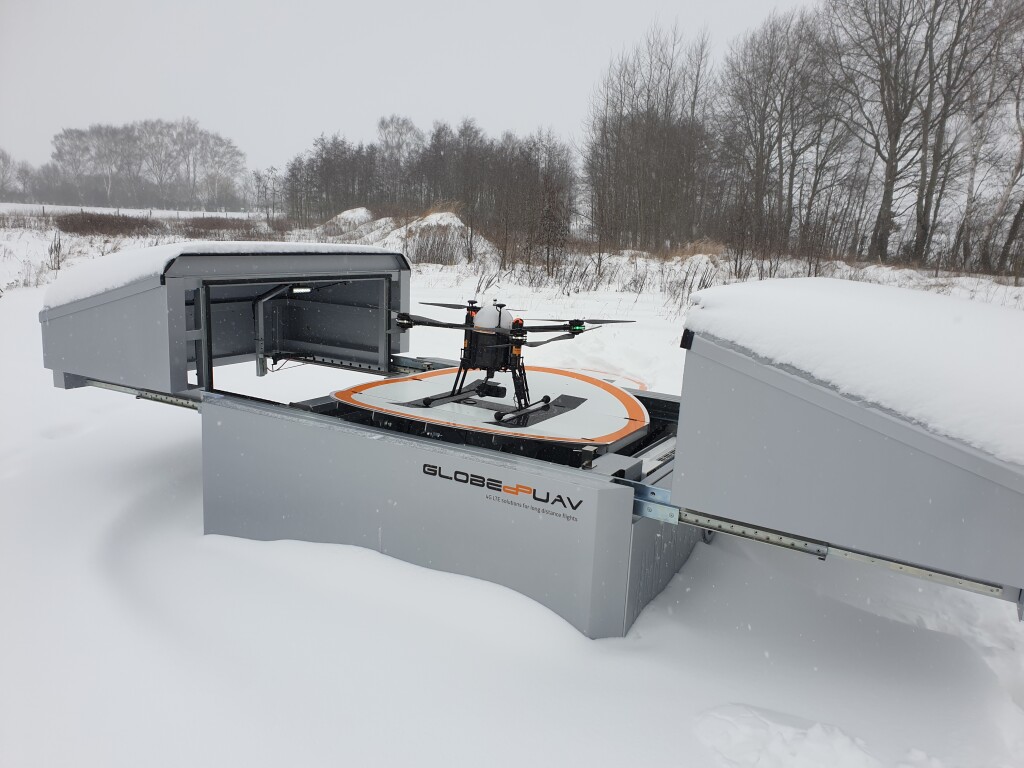Discussions around UAV technology tend to focus on the drones themselves and the accessories and software that enable them to make a difference in industries such as construction, public safety, and package delivery. But there’s another critical element of the drone ecosystem that deserves attention: drone ports and docking systems.
Secure, cost-effective, and efficient facilities for storing and maintaining drones are essential for the industry to fully realize its potential. Fortunately, some companies are focused on developing state-of-the-art docking systems and installing them in cities and towns around the world. Their efforts are helping to integrate drones into everyday life and facilitating the many benefits UAVs can provide.
According to Jörg Brinkmeyer, CEO of Globe UAV, reliable drone ports must be installed for drones to be available for 24-hour-a-day/7-day-a-week use. “A drone port is a place where a drone can take off and land and where its batteries can be recharged,” he explained. “Also, the drone port must be protected by an alarm and be temperature controlled so the drone can operate no matter what time of year it is.”
With these factors in mind, Brinkmeyer’s company created a line of drone ports, which include the mobile SKYRELEASE, the twin port SKYDECK, and the all-around SKYPORT system. “We designed them to work 24/7, 365 days a year and to keep running for minimum of 10 years,” he reported. The ports, Brinkmeyer said, feature “full steel construction, sturdy motors, and sturdy materials so they can survive 10 years even in bad weather.”
Globe UAV’s ports have been deployed to assist in public safety operations in Germany. “We have systems in place in inner cities to provide on-demand services for police or fire brigades,” he reported. All elements of the system are connected through Globe UAV’s Skygate ground control station. This, Brinkmeyer explained, lets dispatchers “look at several drone ports and automatically select which drone port is active, which drone is recharged, and which one can make the distance in the shortest time.”
Drone ports and docking systems have a clear and significant role to play in public safety missions, but they can also be adapted to help with package delivery, inspections, and security operations. In addition, drone docks are being deployed to improve overall city operations.
For example, the Chinese company HEISHA Technology has created a “smart city” program in the Laoshan district of Qingdao. Utilizing HEISHA’s D135 autonomous drone docking station and its M100 monitoring and diagnostic module, the system enables the collection of data essential to many city functions, including emergency management, environmental protection, marine administration, and traffic.
Coordination between the drones themselves, the communications and monitoring systems, and the drone ports bring flexibility and increased functionality to the UAV ecosystem. And, while the drone port technology is here, and improvements are being made, there are roadblocks to full deployment.
“There are some government guidelines and route restrictions that really slow us down, and some projects have been grounded,” Brinkmeyer reported. “But there is also support, and things might start to move faster.”















Comments